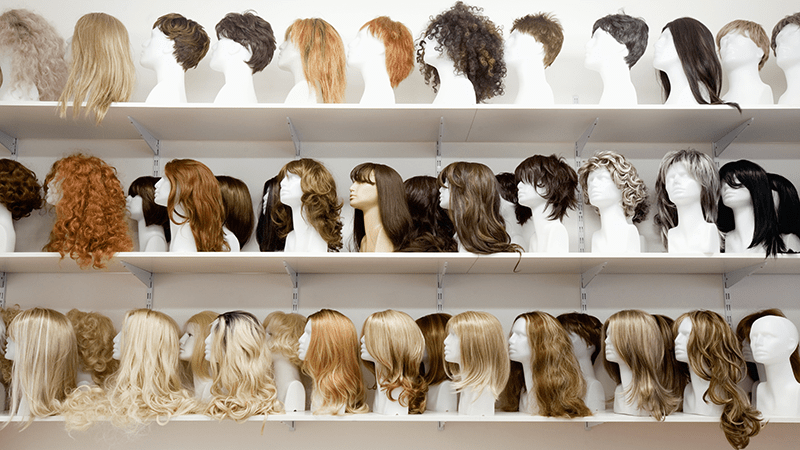Do you suffer from hair loss, and are you looking for a way to conceal it? Then a wig could help you. It's a quick alternative to a hair transplant or hair restorers – but a wig does have its drawbacks, particularly when it comes to upkeep and costs. Find out more here.
Using a wig after hair loss
Wigs have been around for a very long time. They were worn in ancient Egypt and the Roman Empire before falling out of fashion for centuries. But the wig experienced a revival during the Baroque period at the end of the 16th century. It was used to conceal hair loss caused by syphilis, a common disease at the time. The wig achieved true cult status thanks to the Sun King Louis XIV of France. He wore a wig to conceal his thinning hair. These days, wigs are sometimes worn as fancy dress on special occasions like Carnival or Halloween, but they are also still used to hide hair loss.
What are the benefits of a wig, and who are wigs suitable for?
A wig is basically like a second set of hair that you wear on your head. It hides hair loss on the head completely. Wigs are available in many different colours and styles. A good wig looks natural and gives the impression of being the wearer’s real hair. Wigs are suitable for men and women and can be worn for all forms of hair loss. They can even conceal alopecia totalis and alopecia universalis. But if your hair loss only affects certain areas of your head – if you have a receding hairline or a bald patch, for example – then a toupee (a much smaller hairpiece) is a better option for you.
What types of wig are there?
Wigs can consist of real hair or synthetic hair. Both types have their pros and cons.
- A synthetic wig is cheap. The imitation hair is usually colourfast and easy to care for. But many synthetic wigs are not very heat-resistant and do not last long. Wigs made of synthetic hair also tend to look less natural and get matted easily. Other people will be able to see that you are trying to conceal your hair loss.
- Wigs made of real hair look more natural. They are heat-resistant so they can be blow-dried, and if you find the right model it will give you a really authentic look. Real hair is more time-consuming to care for, however, and much more expensive. Wigs made of real hair are more durable than synthetic ones, but they do fade over time through exposure to sunlight.
Synthetic hair or real hair – which is better?
If you want a wig that looks really authentic, it’s a good idea to visit a wigmaker. He or she will make a bespoke wig for you out of real hair, perfectly tailored to the shape of your head and face and your own personal style. This comes at a price, however: the cost of a high-quality wig can easily run into three or even four figures. To make sure your wig looks like real hair, you’ll also need to go to the hairdresser’s and get it cut once you’ve bought it.
Be aware that a wig doesn’t last forever. Depending on its quality and how well you look after it, you can wear a wig for up to two or three years, but after that you’ll have to buy a new one. Synthetic wigs only last a few months. So if you want to conceal your hair loss long-term, you’ll have to buy more than one wig.
Consider time-consuming upkeep and costs
Another drawback of wigs is the amount of looking after they need. You have to clean them regularly. On warm days or with a wig that’s not very breathable, your scalp can quickly start to sweat. This means that over time, the wig starts to smell. You can clean your wig using a wig shampoo. But remember: quality pays off. A high-quality care product will protect your wig, extend its lifespan and keep it looking its best. The cost of buying good care products on a regular basis soon mounts up. Under no circumstances should people with allergies wear a wig, since some wigs can trigger allergic reactions.
Scalp micropigmentation as a long-term solution
Scalp micropigmentation is an innovative alternative to a wig. With this safe, long-lasting and completely natural-looking method, you can conceal your hair loss perfectly. Once you’ve had scalp micropigmentation you can go out in public again the same day, you don’t have the hassle of looking after a wig, and you don’t have to spend money on expensive wig shampoos. Let us help: we’ll be happy to give you an overview of how the treatment works and explain how we can best help you with scalp micropigmentation. Just send us some pictures of the affected areas and we’ll advise you free of charge!
You can count on us for help with your hair loss:
Send us your photos now!
